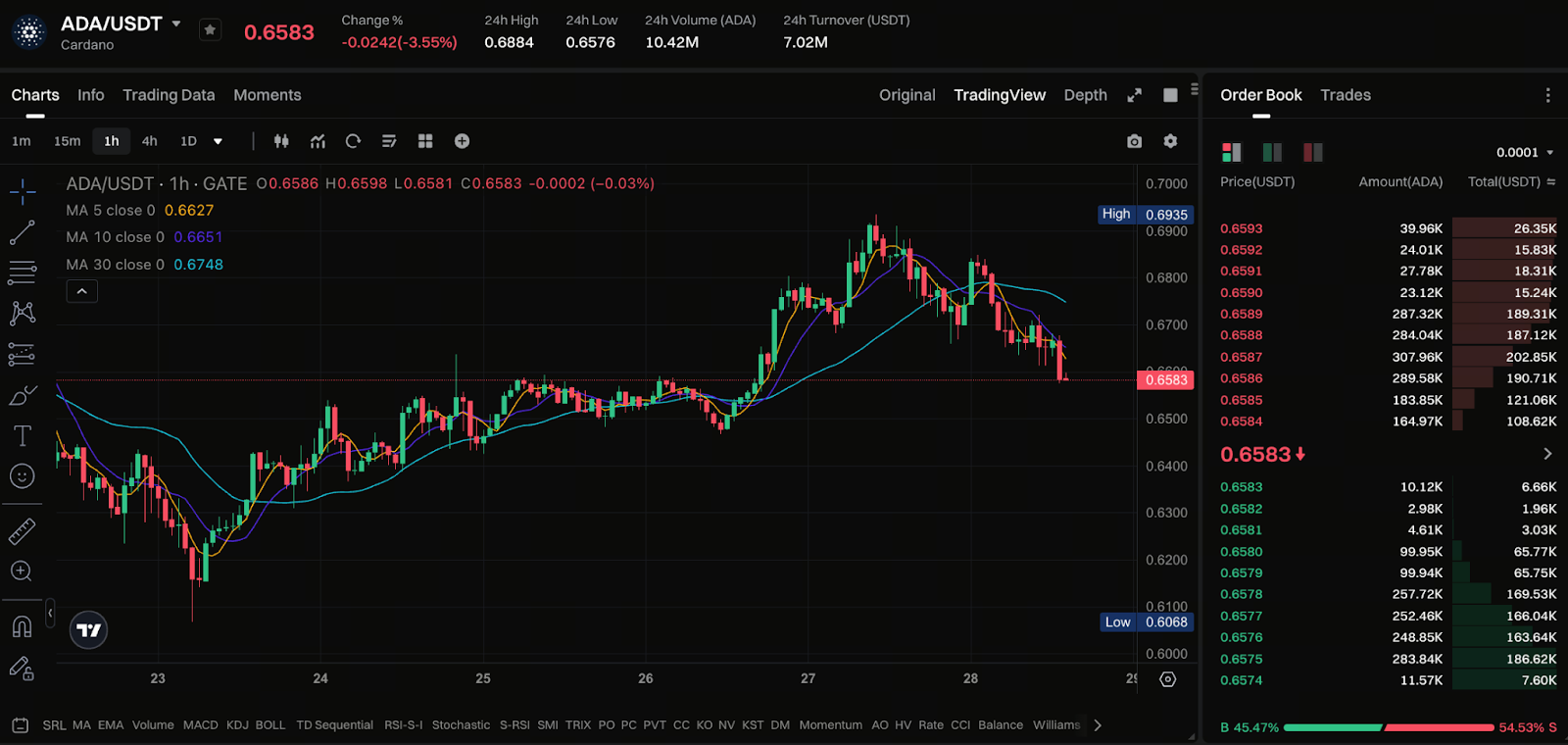ADA Drops 4.7% but Whales Are Quietly Accumulating
Price drops in the crypto market often make investors uneasy. Recently, Cardano (ADA) saw a decline of about 4.7%, attracting considerable attention.
Why ADA’s Recent Drop Is Drawing Notice
Latest reports show ADA’s price fell briefly from around $0.67 to about $0.64, a drop of roughly 4.7%. While not severe, this move stands out in a market marked by caution. Notably, despite the price dip, there are signs that “whales” are quietly accumulating ADA—a divergence that often sparks investor curiosity.
Whale Activity: Accumulation Data Insights
“Whales” typically refer to major holders controlling tens or even hundreds of millions of tokens. Recent on-chain data reveals:
- In the past few days, wallets holding between 10 million and 100 million ADA increased their total holdings from about 13.16 billion ADA to roughly 13.21 billion ADA—an uptick of 50 million ADA, valued at approximately $32 million.
- Reports also indicate that large holders bought around 140 million ADA over a three-day period.
This data suggests that, despite the price decline, whales are quietly adding to their positions. This may signal their continued confidence in ADA’s mid- to long-term outlook.
Technical Analysis: Key Support and Resistance Levels

Chart: https://www.gate.com/trade/ADA_USDT
Technical charts indicate:
- ADA is forming a symmetrical triangle consolidation pattern, suggesting possible range-bound trading before a breakout.
- Key support is around $0.61. If this level fails, price may test the next support near $0.50.
- Major resistance is around $0.73. If broken, price could potentially target $0.86 to $1.12.
For newcomers, this means: if price holds above support and breaks resistance, a rebound may follow. If support fails, watch for further downside risk.
Advice and Risk Warnings for New Investors
- Start by observing whether ADA establishes solid support near $0.61 and if whales continue accumulating.
- If you plan to enter the market, consider building your position gradually rather than investing all at once.
- Be mindful of risks: whale accumulation is a positive signal, but it does not guarantee short-term price gains. Macro factors, regulatory changes, and market sentiment all play a role.
- New investors should set stop-loss and take-profit strategies—for example, consider exiting if support breaks.
In summary, while ADA has slipped in the short term, quiet whale buying provides a focal point for its medium- to long-term prospects. For new investors, careful observation, patient entry, and strict risk control are the prudent approach.
Related Articles

2025 BTC Price Prediction: BTC Trend Forecast Based on Technical and Macroeconomic Data

Flare Crypto Explained: What Is Flare Network and Why It Matters in 2025

Pi Coin Transaction Guide: How to Transfer to Gate.com

How to Use a Crypto Whale Tracker: Top Tool Recommendation for 2025 to Follow Whale Moves

What is N2: An AI-Driven Layer 2 Solution
